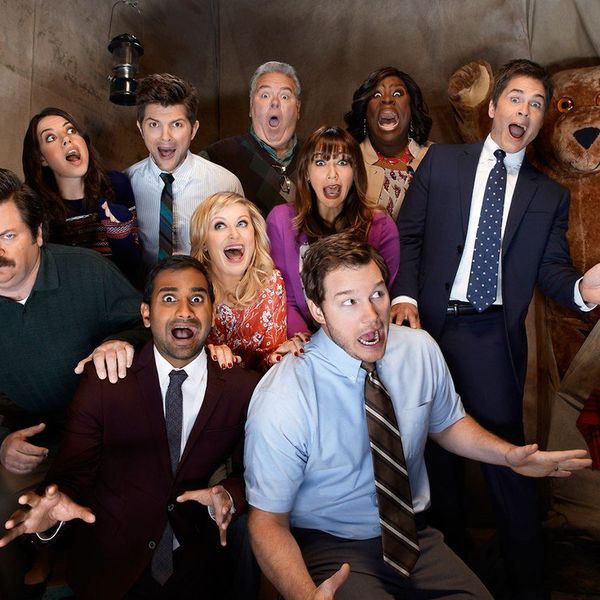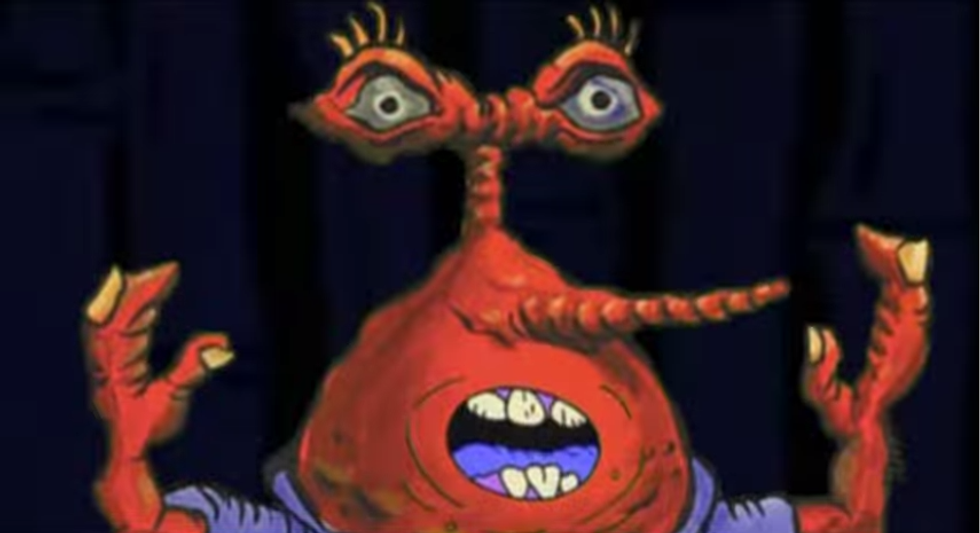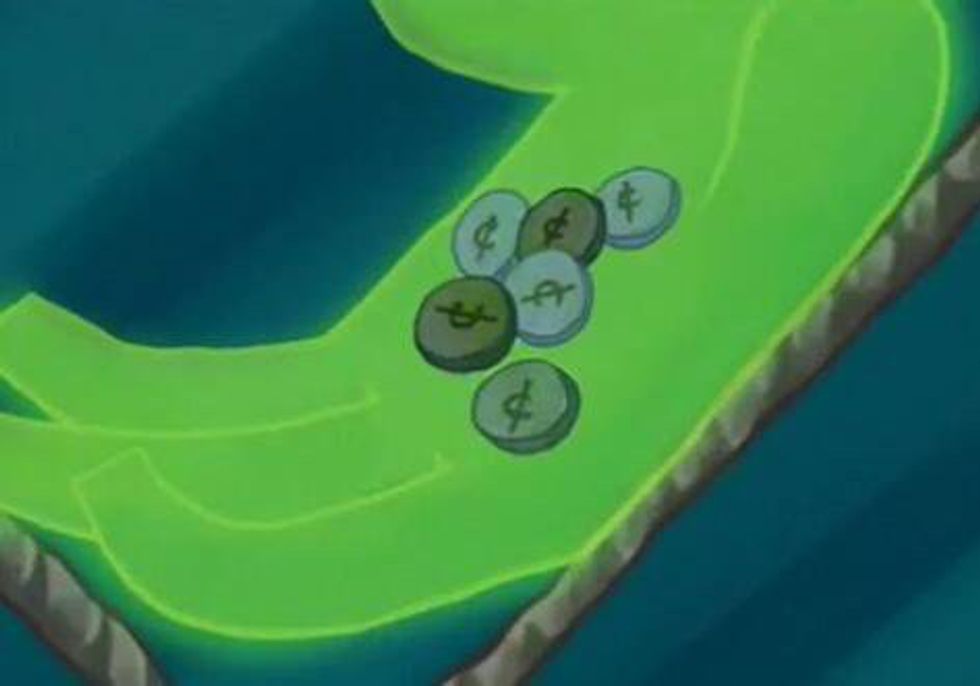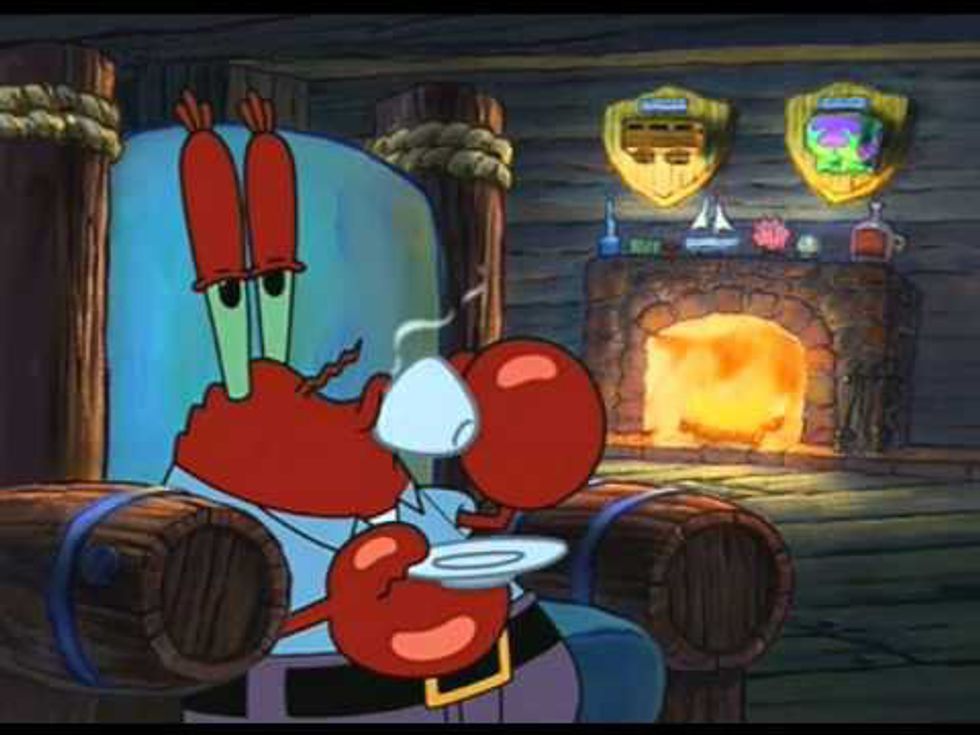Whenever we think about Eugene Krabs, owner of the Krusty Krab in "SpongeBob SquarePants," our minds jump to words like "cheap" and "greedy." However, these become playful adjectives when closely analyzing Mr. Krabs' character based on his decisions and actions throughout the show. Sheldon Plankton's lifelong dream of stealing the Krabby Patty secret formula is nothing compared to Krabs' evil deeds. First off, let's start at work, where we often see Mr. Krabs and his employees.
Pocket Change
In the episode "Born Again Krabs," Mr. Krabs eats a Krabby Patty SpongeBob found beneath the grill in order to save money. This puts him in the hospital and before the Flying Dutchman, who cuts a deal with Krabs that he can live as long as he is generous. Otherwise, off to Davy Jones' locker.
Surprisingly, Mr. Krabs is extremely generous throughout the episode, converting his office into the employee break room, screening unreleased films for customers, and worst of all, giving away free toys. However, when Krabs receives the hefty hospital bill and realizes he's made no money by being generous, he goes insane.
Long story short, Krabs is so desperate that when the Flying Dutchman shows up, Krabs sells SpongeBob's soul for 62 cents, showing how much his employees are worth to him. On innumerable occasions, SpongeBob has actually returned the weak wages Krabs pays him, even sometimes with interest. This, beside demonstrating SpongeBob's childish idiocy, shows the deep level of respect SpongeBob has for Mr. Krabs, in that no amount of money could equal his appreciation. To the contrary, Krabs valuing SpongeBob's soul at 62 cents shows a near-complete disregard for his fry cook, both as an employee and as a person.
Starving Artist
Keeping with the workplace theme but stepping out a bit, remember "Can You Spare a Dime?" It's the episode where Mr. Krabs fired Squidward because he thought he stole a dime, which forced Squidward into homelessness. As kids, we couldn't comprehend the severity of Squidward's situation, which led us to forget that Squidward's pain was solely caused by Mr. Krabs' extreme greed.
Because of a dime, Squidward was forced to beg for change, live in a cardboard box, and eat his paintings because no one would buy them. It's worth noting that Mr. Krabs also contributed to the death of every non-work-related facet of Squidward's life, wholly ruining him. Indirectly, Mr. Krabs pushed Squidward's private art into the public eye, which was met with scrutiny and distaste, thus driving Squidward to put them in the last private container he owned: his stomach. However, this was perhaps the only time Squidward ever really suffered for his art, as a true artist does. Regardless, it's still evil on Krabs' part that this could only come through his spite.
The Bill
In the episode "Squid on Strike," Mr. Krabs decides to start docking his employees' pay for doing seemingly anything that isn't working. SpongeBob and Squidward literally have to pay Krabs to work for him. Scratch that; they have to pay to even exist Krabs' presence.
If the previous two points didn't sell you on just how greedy Eugene Krabs is, this should do it. By billing his employees for existing, Mr. Krabs is demonstrating that SpongeBob and Squidward aren't beings; they're just workers. As "existing" refers to their physical forms, they do not technically have to exist in a physical space just as long as work is getting done. Everything on this list is inherently human and, thus, impossible to avoid doing; and Krabs' insistence on charging SpongeBob and Squidward for any of these things is, in a way, a rejection of humanity. People aren't necessary as long as work exists in some form and is manipulable. Mr. Krabs isn't only evil; he's insane.
Daddy's Girl
Because his daughter, Pearl, is infrequently featured in the show, Mr. Krabs' negligence doesn't have much opportunity to affect her. However, when she is pictured, Pearl's happiness is the most disregarded of all characters. This is seen nowhere as prevalent as it is in "Whale of a Birthday," when Krabs throws his daughter a sweet sixteen party on a consciously non-existent budget.
As a 16-year-old, Pearl is very reliant on her friend group for approval, but this doesn't happen. Her friends cut the cake to find it's cardboard with frosting, which is actually the most visually believable thing in the party scene at the Krusty Krab. The cake's internal inedibility parallels the party, but does a much better job at deceiving her friends. At a first glance, even outside the double glass doors, the party is terrible, suggested by the poorly altered banner above the order window and the cash register. This is also a nod at Krabs' greed, that the pathetic branding for the party hangs above his money, making it a focal point, even though Krabs probably only spent a few bucks on the frosting.
In addition to the cardboard cake, Krabs served dishwater as punch and made a Pearl statue out of raw Krabby Patties, much to her friends' disgust. This is a possible reason why Pearl isn't a recurring character and is always pictured with her friends, because they're the only ones who really care about her, and she knows the emotional devastation her father causes her.
By the Fire
This, however, tops all preceding points. In the episode "Wet Painters," Krabs essentially threatens death on SpongeBob and Patrick if they get paint on anything in the process of painting the inside of his house.
The basis for this episode is pretty simple: Krabs wants SpongeBob and Patrick to paint his house while he's away, and the only condition is that, if they get paint on anything, Krabs will mount their butts above his fireplace, effectively killing them. All right, all right.
What?
Krabs has made some pretty irrational decisions in regards to SpongeBob's soul, Squidward's innocence and his daughter's emotional and social well-being, but he's never out-right threatened to murder anyone under the guise of a butt restitution. Kids, "SpongeBob" is not as cute as you think it is. SpongeBob and Patrick spend the entire episode being extremely careful (well, SpongeBob does) to avoid getting paint on anything, but what kind of an episode is that?
Despite their caution, Spongebob and Patrick get paint on Mr. Krabs' first dollar. After Krabs gets home and tears down the stack of paintings on the wall, he reveals his sadistic game to the cowering duo in the form of licking the dollar clean. As you may remember, the paint comes off with saliva, and SpongeBob and Patrick are able to run for their lives before Mr. Krabs ruins his own house by spit-laughing the paint run off the walls, over everything and onto the floor.
There you have it. Five instances, of many, where Mr. Krabs proved he is the actual villain in "SpongeBob SquarePants." This is why this program is shown to kids -- because they don't question what they see. Mr. Krabs is just a greedy, sweaty guy on the surface, but he's a monster underneath.


























